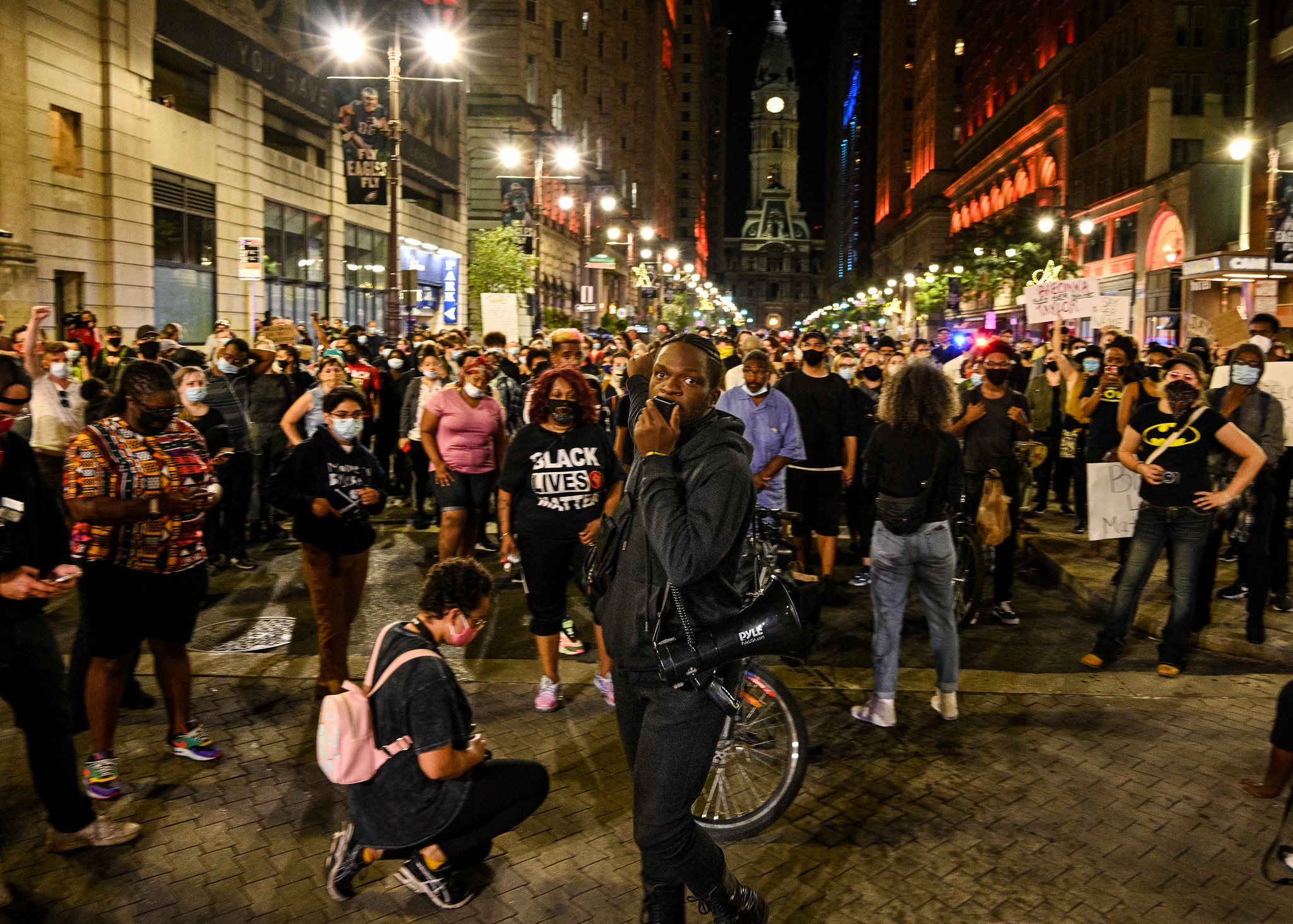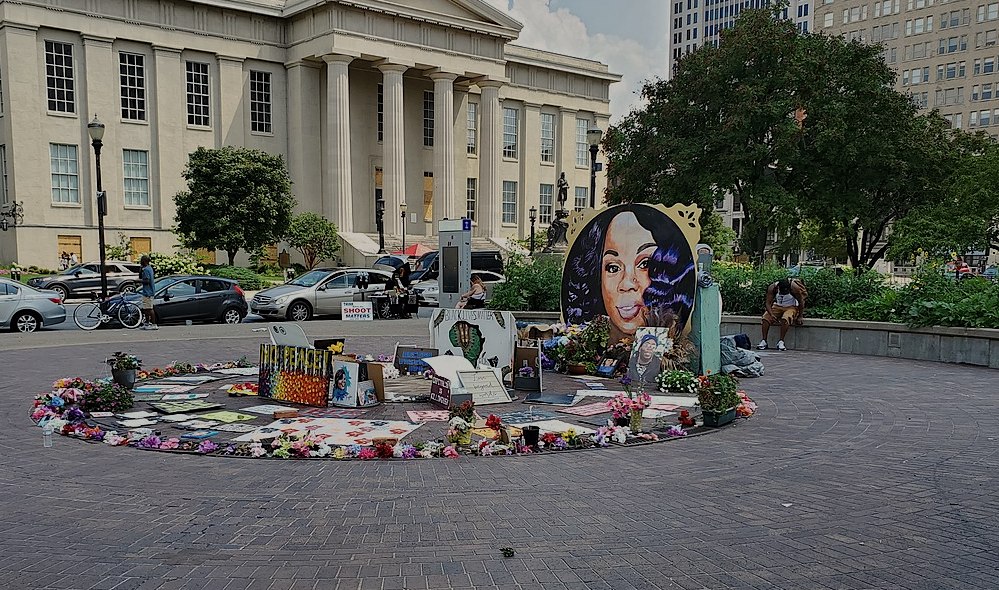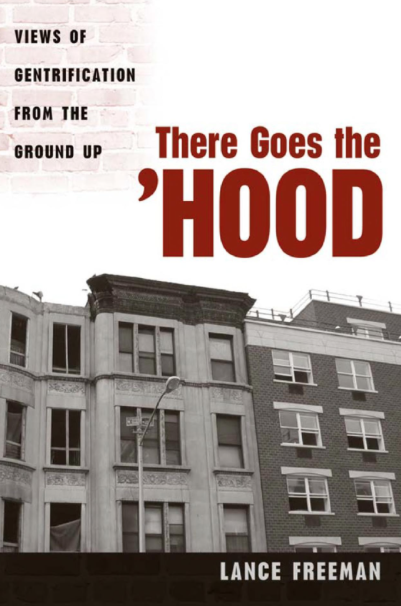A lawsuit alleges Breonna Taylor died because Louisville was trying to arrest its way toward economic redevelopment. Research shows this is common, writes Brenden Beck.

Demonstrators in Philadelphia on Sept. 23, 2020, after a Kentucky grand jury brought no charges against police for the killing of Breonna Taylor. (Joe Piette, Flickr, CC BY-NC-SA 2.0)
By Brenden Beck
The Appeal
 The circumstances surrounding Breonna Taylor’s killing by police in Louisville, Kentucky, are by now well known. When plainclothes officers executed a no-knock warrant at the medical technician’s apartment in March, her boyfriend fired at the police, thinking they were intruders, and three officers returned fire, killing Taylor.
The circumstances surrounding Breonna Taylor’s killing by police in Louisville, Kentucky, are by now well known. When plainclothes officers executed a no-knock warrant at the medical technician’s apartment in March, her boyfriend fired at the police, thinking they were intruders, and three officers returned fire, killing Taylor.
These facts were enough to help spark the ongoing wave of protests for racial justice, but earlier this month, lawyers for the Taylor family made troubling new claims about the context of the police raid.
The lawyers allege that the raid that killed Taylor was part of a broader effort to evict residents who were impeding the city’s Vision Russell redevelopment initiative. When they broke down Taylor’s door, the Louisville police were seeking to apprehend an associate of Jamarcus Glover, a former boyfriend of Taylor’s who lived on Elliott Avenue at the center of the city’s neighborhood “renewal” project. Glover, who faces drug charges, was not in Taylor’s apartment at the time of the raid, and it is unclear whether he was there with any frequency at all.
Contribute to Consortium News’
25th Anniversary Fall Fund Drive
The Taylor family’s lawyers accuse the city of targeting Glover — who was arrested in April — so it could repossess the home he rented. Indeed, in June, the city and a land bank purchased the house for $1.
Employees with the city’s Department of Economic Development vehemently denied a “grand secret” between police action and the redevelopment initiative, but acknowledged wanting to return the block “to productive use” by tearing down some properties. They added that the plan for the city-purchased properties on Elliott Avenue will most likely be to create permanent affordable housing by turning the houses over to a community land trust.
Whatever the truth in this case, academic research and historical scholarship show that policing can be particularly intense during the process of gentrification. This research suggests that the continued use of police to pursue economic development will most likely result in more needless stops, arrests and deaths like Breonna Taylor’s. Recent protests have demanded that police no longer be used as the first response to social problems like mental health crises and drug addiction. That demand might also extend to excluding police from urban “renewal.”
Non-Police Response to Housing Policy

Memorial for Breonna Taylor in Jefferson Square in Louisville, Kentucky. (FloNight, CC BY-SA 4.0, Wikimedia Commons)
We need non-police responses to housing policy that create affordable housing and keep long-term residents in their homes. Cities should move funding away from police and toward housing, community development, and poverty alleviation — the kinds of efforts that can prevent crime.
In a statistical analysis of New York City from 2009 to 2015, I analyzed policing trends in neighborhoods whose low-income residents and lack of recent housing construction made them natural targets for gentrification.
I found that, of this group, neighborhoods that experienced increased real estate reinvestment were more likely to see intensified misdemeanor policing than those that did not.
As property values increased in those neighborhoods, so did order-maintenance arrests for offenses like loitering and disorderly conduct, as well as proactive arrests for offenses like drug possession and driving while intoxicated. This indicates that development-directed policing can happen in neighborhoods experiencing more mundane types of redevelopment, and not just in high-profile renewal zones.
New York’s Experience
The connection between real estate development and policing would not have come as a surprise to long-term residents of New York City’s Lower East Side or Times Square neighborhoods in the 1970s and 1980s. Those communities witnessed high-profile urban renewal projects, which brought intense law enforcement with them.
In 1984, the NYPD made more than 1,300 arrests — mostly for drug possession — in just 18 days on the Lower East Side. They called the military-style enforcement action Operation Pressure Point. The neighborhood’s gentrification was encouraged by the police and city media; a New York Times article in 1985 described Operation Pressure Point as a harbinger of “rising” fortunes during which “art galleries [were] replacing shooting galleries.”
Uptown, Times Square was also undergoing intense policing. As the city was rezoning the area and offering tax incentives to large chains to locate there, they were also making aggressive arrests for prostitution, vagrancy, loitering and other petty crimes that characterized the area. With an Olive Garden and a Disney Store now having replaced pornogaphy theaters and gay bars, it seems the redvelopment agenda was effective.

New York City’s Times Square in 2009. (Terabass, CC BY-SA 3.0, Wikimedia Commons)
Movement of Capital & People
Of course, gentrification is not just this kind of movement of capital back into disinvested areas — it is also the movement of middle class people, often white, into those places.
In my study, I found that rising numbers of middle-class residents in a neighborhood were correlated with increased reports of non-emergency disorder crimes to the police, as might be expected in light of the recent and highly publicized spate of people calling the police on Black, Latinx and Native people for spurious reasons.
Yet, surprisingly, in my data those increased calls, and the presence of middle class and white people in general, was not consistently or statistically significantly related to increased arrests in gentrifying neighborhoods.
In another analysis of New York City, however, Ayobami Laniyonu used a simultaneous measure of gentrification’s investment and demographic changes and found that, overall, an in-movement of middle class people and an increase in rents led to more stops citywide.
Order-Maintenance Arrests
In two studies, Elaine Sharp found that cities with larger shares of professionals living in them made more order-maintenance arrests; Adam Goldstein and I found that cities relying on housing-market growth in the lead-up to the Great Recession in 2008 spent more on police.
As these national studies show, intensified policing during gentrification is not just a phenomenon in big coastal cities.
In Wichita, Kansas, elected officials have been trying for about 50 years to remake the downtown-adjacent “skid row” neighborhood into a business-friendly, middle class area rebranded as “Old Town.”
Chase Billingham found that police, local business owners, and Witchita’s parks and recreation department aligned to try to “clean up” a park in the area by moving out the homeless men, social services providers and sex workers who have historically characterized the area. Though efforts to upscale the area have proved elusive, intense policing remains.
Collaboration to Displace Poor People
This collaboration across city agencies and business owners to displace poor people has also been noted by Chris Herring in San Francisco.
He found that much of the policing effort to clear areas of homeless people was spurred by residents’ and business owners’ complaints. Trying to satisfy these politically powerful groups, officers sometimes told people sleeping out in the city’s rapidly gentrifying Mission District to move to more industrial areas.
City leaders often trumpet their use of police to “clean up” neighborhoods and accelerate economic growth.
Former New York City Mayor Ed Koch bragged about the effectiveness of the NYPD’s sweeping arrests at “reclaiming” Union Square Park. He said of the area, “First the thugs took over, then the muggers took over, then the drug people took over, and now we are driving them out.”
Baltimore’s police commissioner also emphasized the centrality of police in urban redevelopment when he said in 1998 that police “have a huge impact on property values, [and] the commercial viability of the community.”
Denver’s current mayor said in 2007 that crime statistics can affect home values. Minneapolis’s police chief said his officers should take pride in the city’s rising home prices. And the Topeka, Kansas, police department touted its ability to raise property values and grow the city’s tax base when they solicited public donations to a 2013 stolen property tracking initiative.
Property Values & Policing
Police departments in many cities have adopted property value growth as a formal performance metric, Mark Moore and Anthony Braga found. Police are orienting their success to that of the real estate market as city leaders encourage them to add “protecting economic growth” to their growing portfolio of responsibilities.
This new role for police comes at the cost of displacement and increases contact between police and vulnerable communities.
Long-term residents in gentrifying neighborhoods have noted the ramp-up in policing that often accompanies reinvestment and gentrifiers.
 In his 2006 book, Lance Freeman quotes a Harlem resident who says, “If you sit on the benches the police will come along and point to the no loitering sign and say you can’t stay here. [This is] because of new people moving in and putting pressure on the police to make things orderly.”
In his 2006 book, Lance Freeman quotes a Harlem resident who says, “If you sit on the benches the police will come along and point to the no loitering sign and say you can’t stay here. [This is] because of new people moving in and putting pressure on the police to make things orderly.”
Researchers studying Chicago, San Francisco, New Orleans, Vancouver, and Washington, D.C., have all cited long-term residents who say police make more stops and arrests during gentrification, with homeless people and sex workers experiencing especially harsh police contact.
Manissa Maharawal found that the 2014-15 wave of Black Lives Matter protests in San Francisco were motivated in part by opposition to this policing of gentrification.
Gentrification is hardly the only force restructuring American cities. Neighborhoods are more likely to experience durable poverty, white flight or persistent segregation than reinvestment and new middle-class neighbors. Each of these metropolitan contexts will influence policing in a different way. What the academic research summarized here reveals is that gentrification seems to coincide with a particular intensification in policing.
Sadly, Breonna Taylor is only the latest example of a Black or Latinx person killed by police against the backdrop of gentrification.
Eric Garner was killed by an NYPD officer near recently renovated apartment buildings on Victory Boulevard in Staten Island.
Saheed Vassell was killed by the NYPD just seconds after they confronted him in a rapidly gentrifying neighborhood in Brooklyn.
Alex Nieto, a lifelong resident of San Francisco’s Bernal Heights neighborhood, was shot there by four officers after two white people called 911. These deaths are reminders that the struggles for affordable housing and against hyper-policing are intertwined.
Brenden Beck is an assistant professor of sociology at the University of Colorado Denver who studies policing, city budgeting, housing markets, and suburbanization. He is on Twitter @BrendenBeck.
This article is from The Appeal, a non-profit media organization that produces news and commentary on how policy, politics, and the legal system affect America’s most vulnerable people.
The views expressed are solely those of the author and may or may not reflect those of Consortium News.
Please Contribute to Consortium News’
25th Anniversary Fall Fund Drive
Donate securely with
Click on ‘Return to PayPal’ here.
Or securely by credit card or check by clicking the red button:



In Taibbi’s “I Can’t Breathe” account of the Eric Garner case, he wrote about this – that there was an expensive condo development across the street that was the impetus for cracking down more on any suspicious activity nearby. And then the opposite is true in breaking news today Florida prosecutors drops all charges against billionaire Robert Kraft!! This is what justice looks like now in the United States of America.